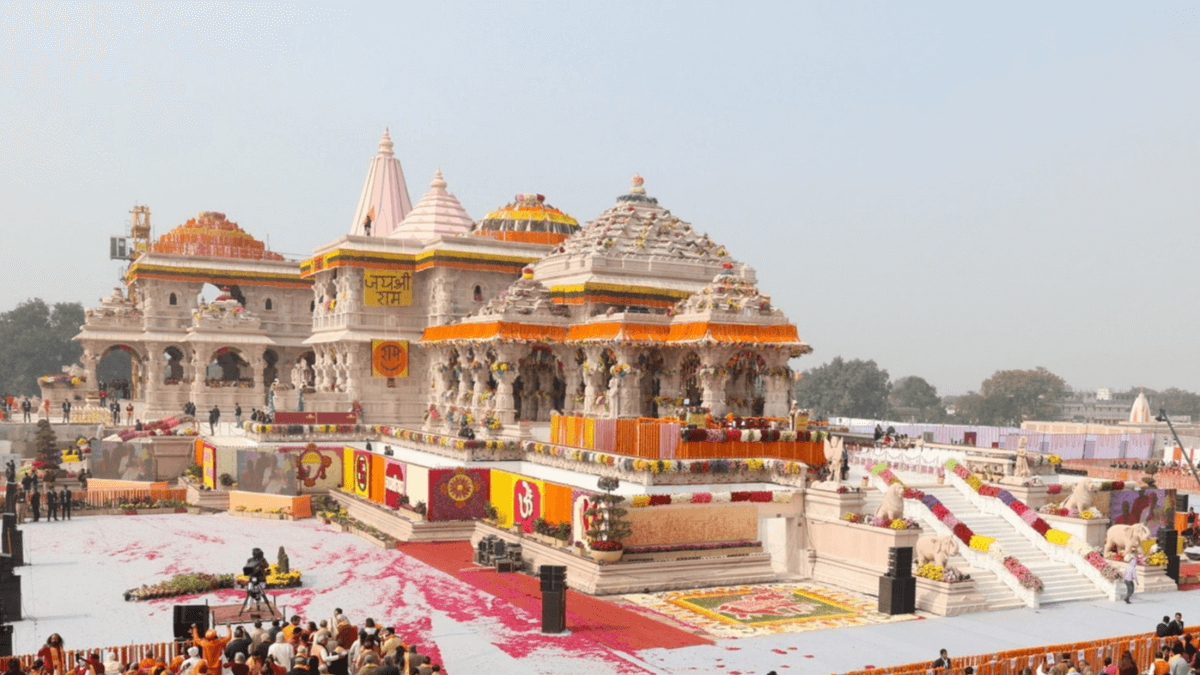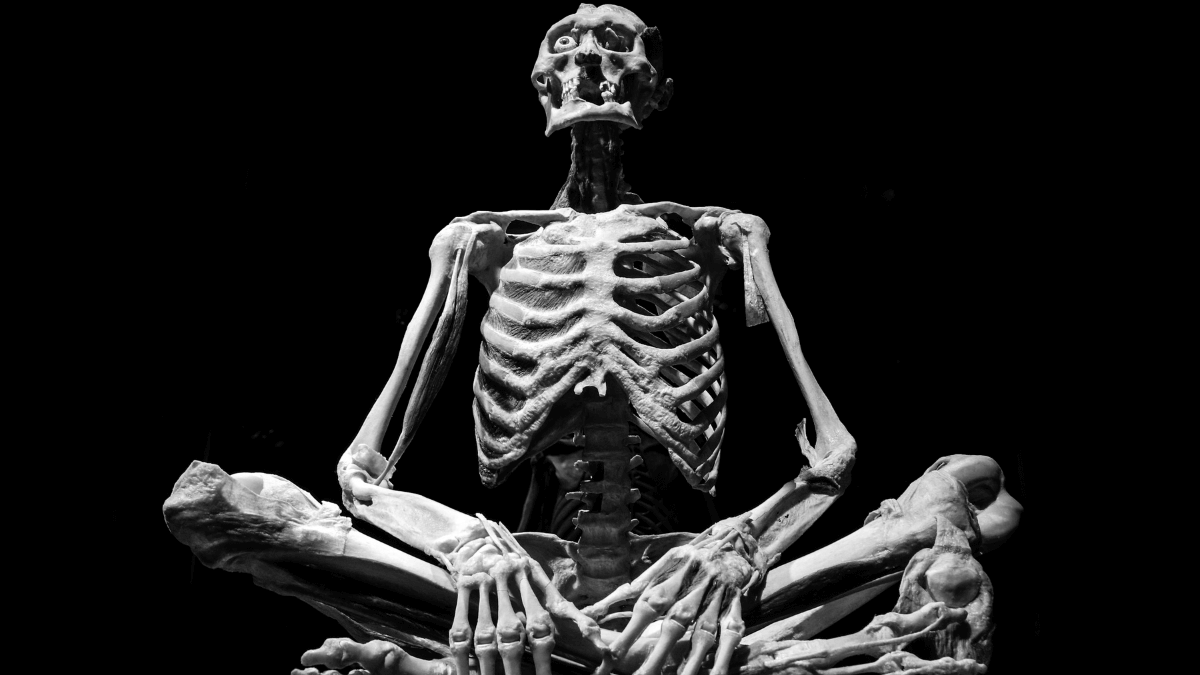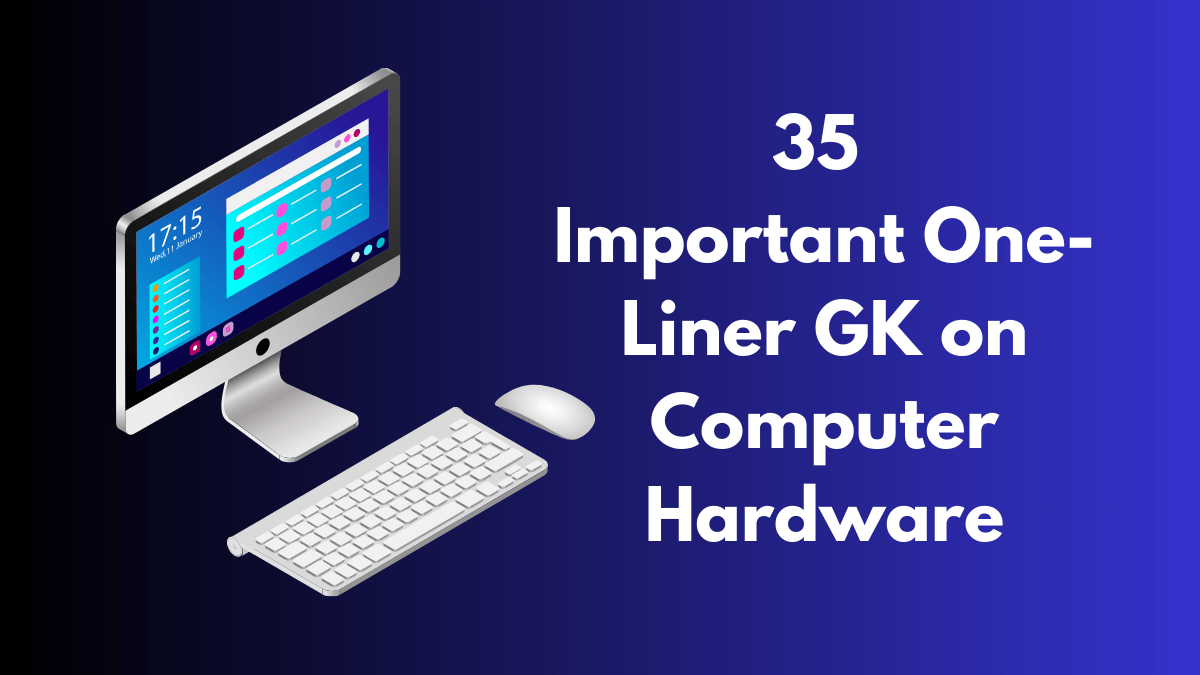52 One Liner Important Facts About Ram Mandir: The Ram Mandir is located in Ayodhya, Uttar Pradesh, India. This is a Hindu temple. Rama is a Hindu deity. Rama was an incarnation of Vishnu. According to Ramayana, Rama was born in Ayodhya. Here are the 52 One Liner facts about Ram Mandir.
52 One Liner Important Facts About Ram Mandir
1. Black stone is used to carve the murti of Ram Lalla in Ayodhya.
2. Mysuru sculptor Arun Yogiraj sculpted the murti of Ram Lalla.
3. Lord Rama is depicted as Five-year-old child standing in the idol.
4. Lotus platform contributes to the idol’s wight.
5. The total height of the idol is 51 inches when measured from the ground.
6. Shyamal (Dark) stone is used to craft the 51 inches idol of Lord Rama.
7. The Rama temple complex is built in Nagara architectural style.
8. The dimensions of the Ram temple complex in the east-west direction is 380 feet.
9. There are 392 pillars on each floor of the temple.
10. The height of the Ram temple complex is 161 feet.
11. There are three floors in Ram temple.
12 Chandrakant Sompura envisioned the original design for the Ram temple in 1988.
13. Sompura family of architects from Ahmedabad was responsible for the original design of the Ram temple.
14. Chandrakant Sompura was the chief architect of the Ram temple from the Sompura family.
15. The Ram temple consist of five mandapas.
16. The dimensions of the Ram temple is 250 feet wise, 380 feet long, and 161 feet high.
17. The Ram temple is the thirst largest temple of the world in terms of size among Hindu shrines.
18. The grandiosity of the Ram temple’s design was showcased in a model in Prayag Kumbh Mela.
19. The Ram temple follows the ‘Gujara-Chaulukya’ architectural style.
20. Indian engineering and construction giant ‘Larsen & Toubro’ (L&T) is overseeing the design and construction of the Ram temple without any charges.
21. Mahant Nritya Gopal Das was the President of Ram Mandir Trust.
22. Iron material is excluded in the construction of the Ram temple.
23. The fusion of stone blocks facilitated in constructing the temple is Copper plates.
24. The sandstone for the Ram temple is sourced from Rajasthan.
25. The absence of iron and use of copper plates for stone fusion feature unique sets of Ram temple construction apart from conventional methods.
26. Shri Nripendra Mishra was the head of the Ram mandi temple construction committee.
27. Shri Champat Rai is the general secretary of the Ram Mandir Trust.
28. In the Judgement of Ayodhya Dispute, Five acres of land was given for the construction of mosque.
29. Jagati is the term for the upraised platform found in Nagara temple architecture.
30. The name of five mandaps of Ram temple are Nritya Mandap, Rang Mandap, Sabha Mandap, Prathna Mandap, and Kirtan Mandap.
31. The Akshardham temple was also designed by Chandrakant Sompura’s family.
32. The special feature incorporated into the foundation of the Ram temple is over two lakh bricks inscribed with ‘Sri Rama’.
33. From Gandaki Nadi, the two Shaligram stones were brought to Ayodhya for the construction of the Ram Mandir.
34. The birthplace of Sita is Janakpur. From here, the Shaligram stones were brought to Ayodhya.
35. Krishna Shila from Karnataka is used to carve the 5-foot-tall idol of Lord Rama for the sanctum sanctorum.
52 One Liner Important Facts About Ram Mandir for All Exams
36. The stones were brought to Ayodhya for carving the idol from Karnataka’s village, Karkala and Hegge Deven Kote.
37. The rocks were sourced from the banks of the river Tungabhadra for carving the idol in Ayodhya.
38. The Ram Mandi is located in Ayodhya, Uttar Pradesh, India.
39. According to Hinduism, Rama is an incarnation of Vishnu.
40. The ancient tale, Ramayana is closely linked to Lord Rama and Ayodhya.
41. The Babri Masjid was torn down at the disputed site in 1992.
42. The foundation stone for the Ram Mandir was officially laid on 5 August 2020.
43. Rama Janmabhoomi Teerth Kshetra Trust is overseeing the construction of the Ram Mandir.
44. On November9, 2019, the Supreme Court of India delivered the verdict on the Ayodhya dispute.
45. There are 5 domes are planned for the Ram Mandir.
46. The sacred river, Saryu, is flowing near Ayodhya.
47. Narasimha Rao was the Prime Minister of India during the Babri Masjid demolition in 1992.
48. The estimated cost of the construction of the Ayodhya Ram Mandir is ₹1800 crore.
49. Faizabad was the changed name of Ayodhya.
50. Shankar Dayal Sharma was the President of India in the year 1992 when Babri Masjid was demolished.
51. Kalyan Singh was the Chief Minister of Uttar Pradesh at the time when Babri Masjid was demolished.
52. Narendra Modi, Prime Minister of India, laid the foundation stone of the Ayodhya Ram Mandir.
You can read more about Ram Mandir from here [Read More]. You can also join our Telegram Channel for getting notification of latest posts [Join Now].







